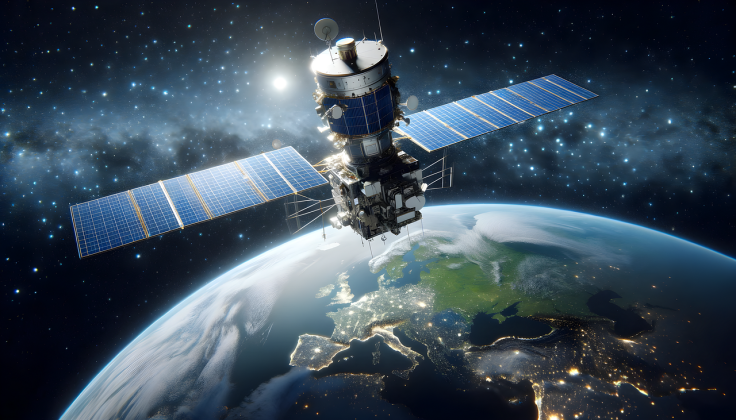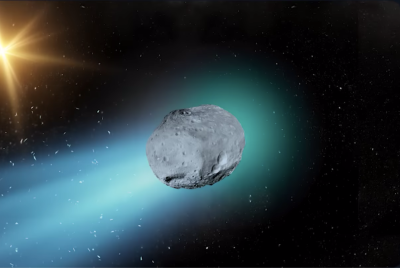UK South of Cambridge, Ispwich, or Milton Keynes at Risk of Being Hit by Soviet Spacecraft: What's Going On?
The exact landing time and location remain uncertain

A gigantic piece of Cold War space trash is heading for the planet, and part of United Kingdom is possibly in its sights.
Worth about the cost of a small vehicle, this 500kg Soviet space fantasy debris of Kosmos 482 could strike between May 9-13, with residents south of Cambridge, Ipswich, and Milton Keynes are looking up in terror.
'We have pinpointed the probable landing strip between 52 north and south latitude,' says Dr Marco Langbroek, who monitors objects in orbit at Delft University of Technology.
This ghostly line passes through rural England, putting towns and villages in Cambridge, Ipswich and Milton Keynes in this strange space threat.
UK South In The Crosshairs Of Falling Soviet Satellite
Weeks after its contentious launch, New Zealanders saw fireballs burning in their skies as two pieces broke apart on reentry—although Soviet officials were tight-lipped about any link at the time.
What is so disconcerting about this is the complete lack of certainty. In contrast to choreographed reentries where space agencies are in charge, this ghostly returnee from the Space Race era follows no predictable path, with experts unable to determine precisely when and where it might land.
For now, millions across southern England share an unusual predicament with countless others worldwide—finding themselves unwitting participants in the final chapter of a forgotten Soviet mission, half a century after its ambitious launch.
50-Year-Old Space Debris Poses Impact Risk To Populated Areas
In 1972, the USSR sent the Kosmos 482 probe skyward to study Venus. However, a failure in its engine prevented it from escaping Earth's orbit, ultimately causing it to break apart into four fragments.
Just days later, two of the fragments met a fiery end above New Zealand, though the USSR denied any connection at the time. Scientists now suspect that an object racing towards Earth at an incredible 17,000 mph is the Kosmos 482 landing module, the last piece of the probe that was unaccounted for.
Despite the impossibility of an exact prediction, Dr Langbroek suggests a landing zone between 52 degrees north and south of the equator. This broad range encompasses nearly all of Earth's inhabited areas and all of the globe's major urban centres, placing them within the potential impact zone.
1/x
— Dr Marco Langbroek (@Marco_Langbroek) May 5, 2025
New update of the #Kosmos 482 Descent Craft #reentry forecast based on new orbit update:
May 10 +/- 1.5 days.
Details in the updated blog post (link in next tweet) pic.twitter.com/C4as3Tmwjb
'The risks involved are not particularly high, but not zero,' Dr Langbroek says, according to a report by MailOnline. The landing module's titanium exterior was specifically engineered to withstand the harsh Venusian atmosphere, meaning it will probably reach Earth intact.
Ironically, its robust design for Venusian entry could allow it to survive the return through Earth's atmosphere intact rather than disintegrating and eventually hitting the planet's surface.
Experts Divided On Landing Time And Location
In a blog post, Dr Jonathan McDowell, an astronomer who monitors satellite re-entries, noted: 'The vehicle is dense but inert and has no nuclear materials. No need for major concern, but you wouldn't want it bashing you on the head.'
A Soviet spacecraft is expected to crash land on Earth this week. If it survives reentry, Kosmos 482's possible landing zone includes the entire contiguous United States, the UK, Australia, South America, and Africa. https://t.co/8NWbmvfoq1 pic.twitter.com/uf6cyE0DYs
— AccuWeather (@accuweather) May 5, 2025
'In which case I expect it'll have the usual one-in-several-thousand chance of hitting someone,' Dr McDowell adds. 'If this were to cause damage – or worse, to hurt someone – that would be something that the Russian government would be liable for,' he told MailOnline.
Even with this possibility, the odds of Kosmos 482 impacting your home are quite minimal. The most expected scenario is that the object will come down in the planet's oceans, which cover over 70% of its area.
'If you land something in a random part of the Earth, the chance that it hits a person is about one in 10,000. The chance that it hits you is then one in 10 billion – smaller than that,' says Dr McDowell.
What To Expect As Spacecraft Returns
According to McDowell, as the capsule plunges back into Earth's atmosphere at a blistering 17,000 miles per hour, it will be enveloped by a shock wave and a fiery 'fireball,' a result of the atmosphere compressing intensely beneath its rapid descent.'
The friction the atmosphere generates will eventually decelerate the craft to an impact speed ranging from 145 to 157 miles per hour. While the landing module had a parachute to ease its descent, some astronomers now suspect these are no longer functional.
Dutch satellite tracker Ralf Vandebergh achieved an impressive feat by obtaining the first set of detailed, high-resolution images of the orbiting satellite component.
#Cosmos482 images with 10 seconds interval show the attitude of the descent craft with the attached structure. Although the images may not look impressive, it is really at the top of the equipment and seeing to be able to resolve this in a just 1 meter small object from 420 km. pic.twitter.com/53rdGKoqg9
— Ralf Vandebergh (@ralfvandebergh) May 2, 2025
'Several frames seems to confirm what I thought to see in the 2014 images, [that] there is a compact ball but several frames show a weak elongated structure at one particular side of the ball,' Vandebergh told Space.com.
Vandebergh theorises that this visible structure might be the parachute, already deployed in orbit. If the parachute is indeed already out, it would likely be destroyed during re-entry and, therefore, unable to lessen the satellite's eventual impact velocity.
Dr McDowell paints a stark picture, stating the capsule will slam into the ground with the force of a car falling out of the air at 100 to 200 miles per hour. However, Dr. Langbroek doubts that the recent images prove the parachute has already been deployed.
For now, millions across southern England share an unusual predicament with countless others worldwide—finding themselves unwitting participants in the final chapter of a forgotten Soviet mission, half a century after its ambitious launch.
© Copyright IBTimes 2025. All rights reserved.





















